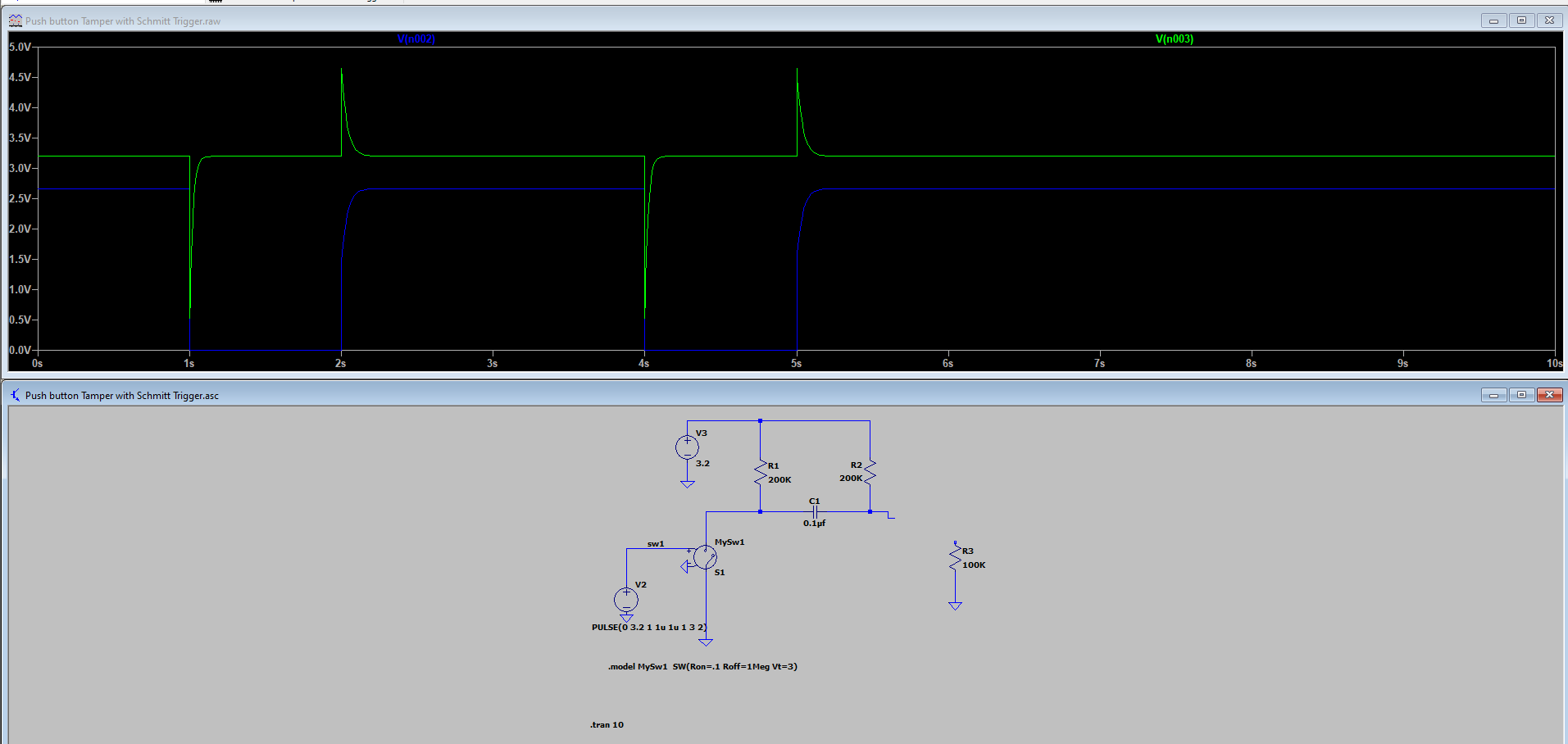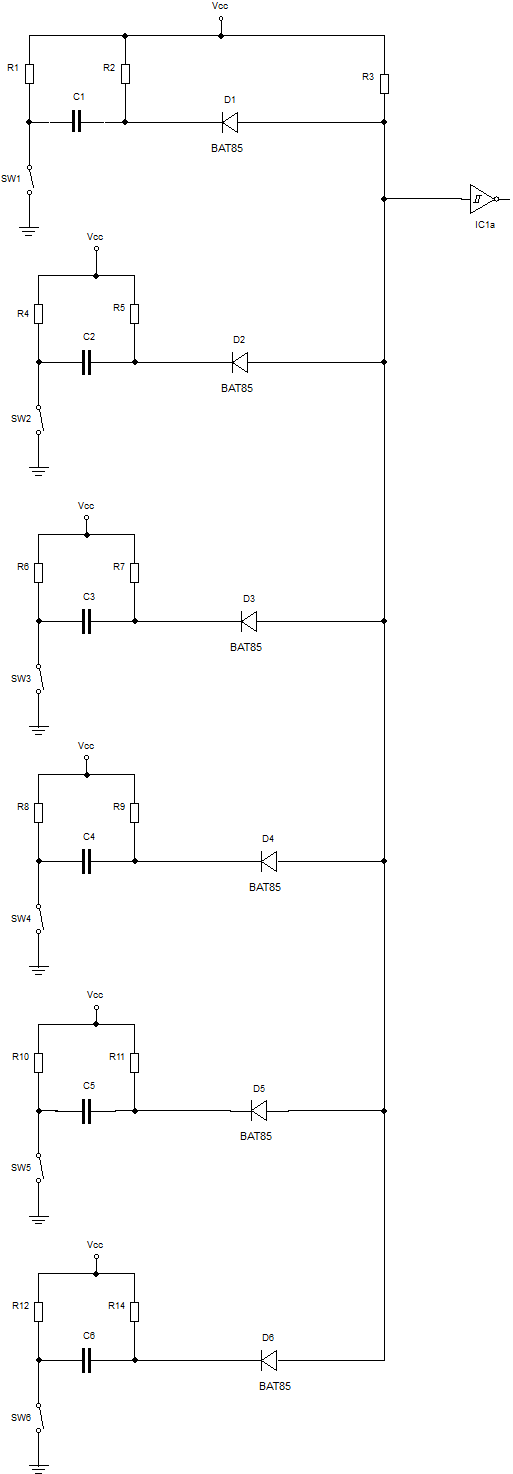I've been struggling with getting this circuit to work. My objective to try to use low-power (3.3 V/μA), low-cost, jellybean components. The idea of this circuit is that we have six latching buttons for tamper detection connected to one single dedicated pin while in a battery operated backup mode.
In a tamper situation the button toggles the inputs state from open-circuit to ground which generates a single sharp drop of capacitor charge which goes into a hex Schmitt trigger inverter which outputs this glitch as a positive pulse. The reason for using this RC circuit is that I need to be able to manipulate my 1 interrupt pin (dedicated) to get an interrupt from all six switches without having a single switch to latch the pin to ground indefinitely, making it impossible to detect any further tamper switching events.
Blue trace = switch (pressed = 0 V) Green trace = inverter output
After building this circuit it works when the pull-up and the resistor in the RC circuit at the input of the inverter do not exceed 22 kΩ The Problem is that the the Schmitt trigger inverter input struggles to work with weaker pullups (680 kΩ for example). My intention is to have the lowest possible current consumption.
The inverter I'm using an M74HC14 as this what is available in my local area. I've scoured the internet for quite some time but I've not found any datasheet stating anything of help. Are there any types of inverter/Schmitt trigger that work without problems with big resistors at their inputs?
I've thought of maybe using inverting buffers which have Schmitt trigger inputs, but they are going to be ordered internationally so I would really appreciate it if someone could shed some light on what to look for if they tolerate the high resistor pull-up situation.
Another take I may just ditch the Schmitt trigger inverter and just rely on pure RC circuitry. Now this circuit works if implemented with one switch and the output works like shown below without problems.
 Blue trace = Switch (pressed = 0V)
Green trace = RC Circuit output (@ R2 & C1)
Blue trace = Switch (pressed = 0V)
Green trace = RC Circuit output (@ R2 & C1)
The problem starts when I try to duplicate this circuit and make a total of 6 parallel circuits. I tried separating each out of a circuit with a series diode and of course I installed a clamp diode right where I tie the outputs together to one pin, but the circuit would get worse and anyway would not work when compared to just 1 circuit alone**, the voltage drop at the output of RC Circuit now does not drop to zero, drops down from 3.2 V maybe to around 2.44 V (low) which is far the region to be recognized by the microcontroller as a zero (low).
If anyone needs more information, please let me know, and thanks to everyone for taking the time to read this thread.


